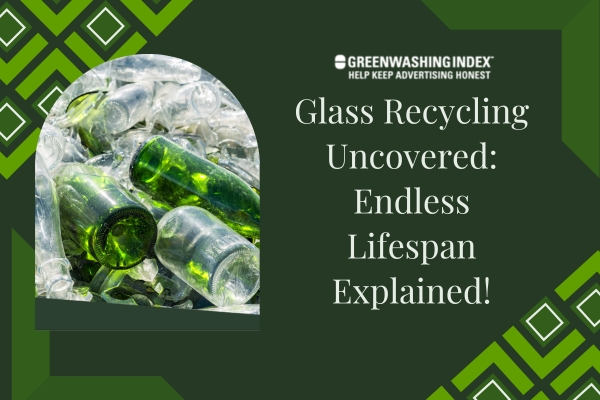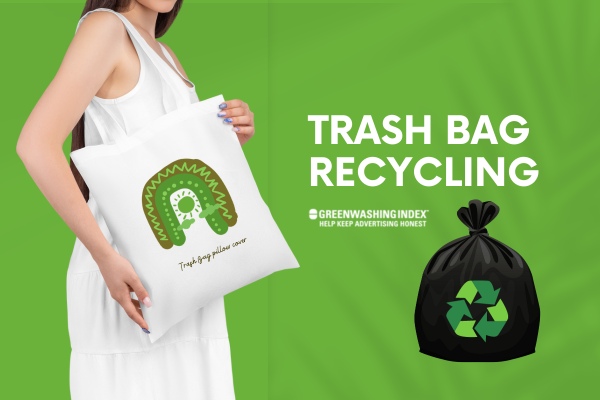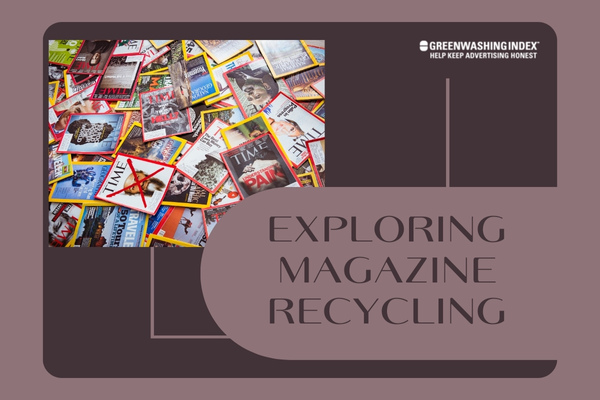Everyone has bits and pieces of glass at home, from empty pickle jars to the wine bottles of a dinner party. But what do you do with them once they’re empty? That’s where glass recycling makes its grand entrance. Just the sound of it – reusing what’s already been used – feels good, doesn’t it?
Ever wonder if the glass jar that once held your grandma’s apricot jam could tell its story over and over again without getting tired? Well, it can! Because when we talk about recycling glass, we’re talking about a superhero level of reuse. A bottle dumped in the recycle bin doesn’t have to end up in a mountain of trash; instead, it can show off its recycled glory indefinitely without losing any shine or strength.
What You’ll Discover Here
- Simple truths about why your glass deserves a second chance
- Your essential part in giving glass items new life
- The remarkable journey from your recycle bin to rebirth
- Real reasons not all glass can join the recycle rally (and what’s being done about it)
- Surprising ways you’re saving our planet with every piece you recycle
Breaking Down Glass Recycling Basics
Recycling is amazing, and when it comes to glass, it’s even more special. Let me tell you why glass recycling is something to get excited about.
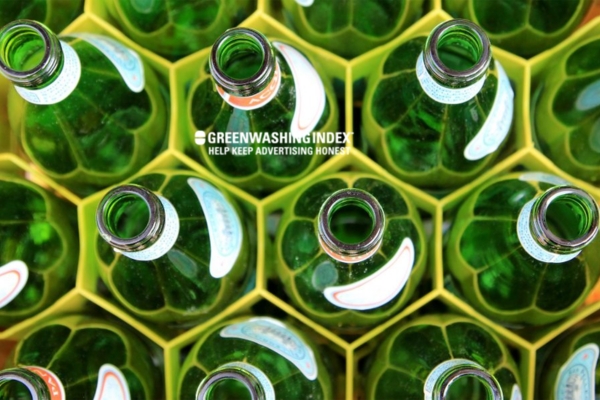
The Eternal Life of Glass
Now, have you ever wondered what happens to the glass bottle once it’s empty? In the world of recycling, glass is like a superhero. It can be recycled over and over again without getting tired or worn out. This means the same piece of glass can keep starting new lives in different shapes and forms endlessly!
Here’s the extraordinary part: each time glass is recycled, it keeps its purity – that means it stays clean and clear. Plus, its quality doesn’t drop, either. It’s as though every time glass gets recycled, it says, “I’m ready for another round!”
So how does this happen? Well, let me give you the ABCs of glass recycling:
- Collection: This is where everything starts – we put our empty bottles and jars into recycling bins.
- Sorting: Once the bins are taken away by trucks, at a special plant, they sort out different colors of glass – transparent (that’s clear), green, and brown mostly.
- Cleaning: These pieces are cleaned up well to remove anything that isn’t glass – like food bits or labels.
- Melting: They heat up these clean bits really high in a big oven until they turn into liquid (kinda like lava).
- Molding: They then shape this hot liquid into new jars, bottles, or other products.
- Re-use: And voila! Out comes a brand-spanking-new bottle, ready to be filled with something delicious again!
What’s magnificent about this process is that there’s no end date on how many times this can happen for any piece of glass – no expiry date on its usefulness! Nothing gets wasted during recycling glass; every bit can be turned into something usable again without adding fresh material or losing any quality along the way.
This ability makes recycling glass one extraordinary loop that helps us save energy and resources – because creating fresh stuff from scratch takes way more work than just reusing what we already have!
To put it simply, think of our planet like your favorite cozy blanket – you wouldn’t throw it away after one use, right? You’d wash and reuse it many times because it stays nice and works great every time – same deal with our friend Glass here!
So next time you finish up your jelly or pickles from their jar, remember: that container’s journey doesn’t have to end there at your kitchen counter…when you recycle, you’re giving that jar another chance at life! It could come back holding anything from apple juice to zesty salsa someday—all while staying true blue top-notch quality-wise!
Imagine if everything worked like that; not much would go to waste at all! That’s why knowing about & practicing glass recycling continually is so vital—it basically makes Mother Nature smile BIG time!
What Goes into Recycling Glass?
Recycling glass is something that’s important for keeping our planet healthy. I want to talk about how this glass recycling process works. It’s not too tricky, and anyone can understand it if we go step by step.
First things first, it all starts when you finish a bottle of your favorite drink or maybe an empty jar of pickles. Instead of throwing these glass items in the trash, you put them in a separate bin just for glass. That’s the collection part.
Now, let’s walk through what happens next:
- Collection: Glass containers are collected from homes, businesses, or recycling centers. They can mix together – all colors and types because they will be sorted out later.
- Transportation: After collection, trucks carry this glass to a recycling facility where the real work begins.
- Cleaning: Once at the facility, they wash the glass to get rid of any leftover food, liquid, labels, or caps.
- Sorting: Probably one of the most interesting parts is sorting the glass by color: clear (like some water bottles), green (think wine bottles), and brown (like some beer bottles). Each color gets its own pile because they melt differently and are used for making new items that are usually similar in color to how they started.
- Crushing: Next comes crushing; big machines break down those piles into tiny pieces called cullets.
- Melting: The cullet goes into a very hot furnace – we’re talking as hot as lava! Here, it melts down into something like thick liquid glass, which can be shaped again.
- Molding/Shaping: As soon as it’s melted properly, this liquid can then be made into new jars or bottles again without adding too much fresh stuff—that saves energy!
- Quality Check: Imagine getting a new bottle with a crack—it wouldn’t be good—so these new containers are checked over to make sure they’re just right before sending them out.
- Ready For Reuse: Finally comes the moment when those newly recycled jars or bottles get filled up again and sent off to stores so people like me and you can use them another time! And guess what? This whole cycle can happen over and over!
Now, isn’t that cool? All those steps make sure that our glass recycling efforts don’t go to waste—pun intended—and help us save resources (like sand since that’s what’s used to make fresh glass) but also let us take better care of our environment since we need less energy compared to starting from scratch each time.
So now you know just how your empty juice bottle or pasta sauce jar gets ready for its next life, thanks to recycling. Isn’t it awesome thinking about how by doing something small like separating our trash, we’re actually doing big things for Mother Earth?
Also Read: Computer Recycling: Green Guide to Old Tech Disposal
Sorting Through Your Recyclables
When I start to sort out my recycling, I always pay special attention to glass because not all glass can go into the bin. Glass recycling can be a bit tricky. It’s important for me to know what type can be recycled and what cannot. So, let me share some details on that.
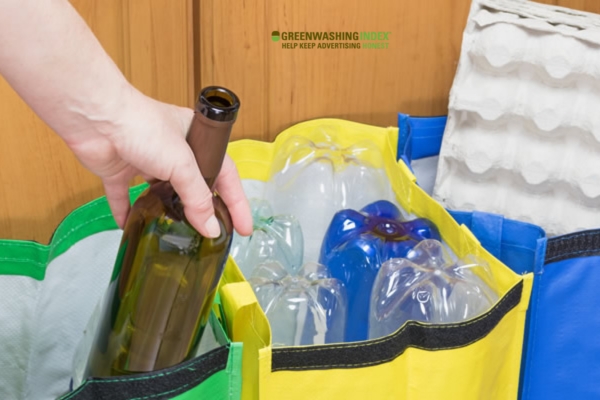
Identifying Recyclable Glass Items
Firstly, there are a few different types of glass items we use every day. Not all of them are okay for recycling programs. Here’s a list of common glass items and whether they can be usually recycled or not:
- Beverage Bottles: These are mostly accepted by recycling programs.
- Food Jars: Items like jam jars or pickle jars are recyclable as well.
- Broken Glassware: Unfortunately, dishes and mirrors should not go into the recycle bin because they have different melting points and chemical compositions.
- Light Bulbs: Regular incandescent bulbs aren’t recyclable through normal programs but could be taken back by specialty facilities.
- Windows and Glass Sheets: These are often treated and not recyclable in the curbside program.
- Pyrex or Heat-Resistant Kitchenware: They have unique properties, making them unfit for standard glass recycling.
It’s key to double-check with your local program because rules might vary depending on where you live.
The Do’s and Don’ts of Recycling Glass
When it comes to actually preparing the glass for recycling, here is a basic list of what you should and should not do – just follow these steps:
Do:
- Rinse out your bottles and jars thoroughly; no leftover food or liquid is important.
- Remove caps or lids from the glass containers since they’re often made from different materials that need separate processing.
- Take off any labels if possible; some soak off easily after a bit of time in water.
Don’t:
- Leave food residue on your glass – it can contaminate other materials in mixed-recycling bins.
- Include non-container glasses like windows or mirrors; these materials could ruin an entire batch of recyclable glass due to their different melting points.
- Put small fragments in the recycle bin as they may not be detected by sorting machines at recycling facilities.
Following these simple guidelines will help ensure that my glass items will have the best chance at a second life after I send them off to recycle!
Also Read: Paper Bags Recycle: A Must-Know Sustainability Guide
Step-by-Step Guide On How To Recycle Your Glass?
Recycling glass is a simple way to help our planet. Here, I’ll talk about how you can turn your waste glass into something useful again. It’s like giving your glass pieces a second life! Let’s take this journey step by step.
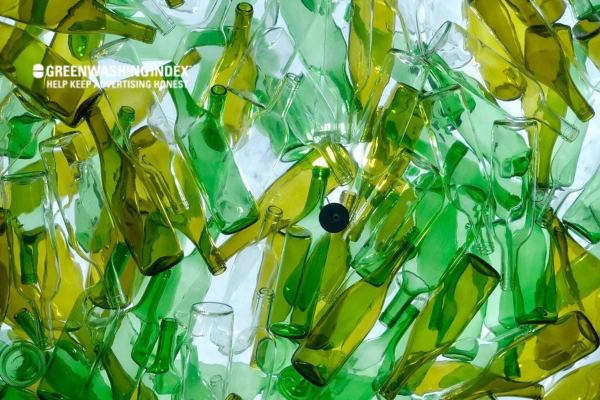
From Waste to Worthiness – Your Role in the Transformative Journey
When you think of recycling glass, imagine each piece going on a great trip from being waste in your home to becoming a brand-new product. You play a big role in this adventure! Follow these steps:
- Start by cleaning: Before anything else, make sure your glass items are clean. Wash them so there’s no food or drink left inside.
- Sort out your glass: Not all glass can be recycled the same way. Look at your jars, bottles, and other items made of glass and put them into separate groups based on color: clear, brown, green – each color goes in its own pile.
- Remove any non-glass parts: If there’s anything on the glass that isn’t made out of it (think metal lids or plastic labels), take those off and throw them away unless they can be recycled separately.
- Know what can’t be recycled: Some types of glasses aren’t recyclable through common systems – things like light bulbs or ceramic dishes must not join this trip.
- Double-check for safety: Make sure there are no broken pieces when you’re setting apart the good recyclable material because they might not only hurt you but also ruin the whole recycling process for that batch.
- Find local rules (this is important): Every place has its own rules about recycling – find yours! Some places will collect recyclable items right from where you live; others might need you to drop them off at specific sites.
- Use proper containers if needed: Depending on where you live again, they might ask for the recyclables to be placed in special bins or bags — use those if that’s what’s required.
- Label clearly if necessary: If asked for by local guidelines, leave clear notes saying “Glass Recycling” so those collecting know what’s inside without mistake.
- Drop-off at recycling centers (if needed): If picked up from home isn’t an option, take your sorted and prepared items down to their next stop: local recycling centers are ready just for them!
- Pat yourself on the back! You’ve done an essential bit towards reducing waste and saving energy!
Each step matters because you’re helping transform something old into something new — it may seem small, but think of all individual actions adding up across millions of homes; together, we make significant strides towards sustainability with every bottle or jar we send off carefully sorted and cleaned!
Remember – every time we go through these steps with our used-up jars or soda bottles. We’re part of the reincarnation process. It makes that ‘clink’ sound when tossing it into bins much more satisfying, knowing I’m contributing towards careful Glass Recycling efforts worldwide!
The Processing Pivot – Where Does Your Bottle Go Next?
Let’s dive deep into what happens after you’ve tossed your glass bottle into the blue recycling bin. It’s fascinating to see the journey of glass recycling and how every bottle has a chance for a new life.
First, your glass gets picked up and taken to a material recovery facility, also known as an MRF. Please think of this place as a big factory where all the things we recycle get sorted out. Here’s what happens there:
- Sorting: When the glass arrives, it’s put onto a conveyor belt with lots of other materials. Workers or special machines sort it from everything else.
- Cleaning: After that, the glass needs a good bath to get clean because it often has food residue or labels on it.
- Further Sorting by Color: Glass comes in different colors: clear, green, and brown are common ones we see every day in bottles and jars.
- Why does color matter? When making new glass items, keeping colors separate is important because you can’t unmix them once they are melted together.
- Crushing into Cullet: Now comes an interesting part! The clean and sorted glass is crushed down into small pieces called ‘cullet.’ Cullet looks like tiny pebbles or sand made out of glass.
- Why crush it? Crushing makes it easier to melt down later when making new products.
This stage at the MRF is crucial because if anything goes wrong here (like mixing colors) or if some other things like plastic are not removed properly, then it can spoil whole batches when making new products.
Remember this process next time you’re about to throw away a jam jar or finish off that soda—that simple act of tossing your bottle into recycling sets off this amazing chain of events at the back end! That’s the ABCs of Glass Recycling for you – ensuring every bit gets turned around for another use without wasting any precious material!
The Challenges With Recycling Glass
When I think about glass recycling, I imagine it as a simple process where you just drop the bottles and jars into a bin, and they are magically turned into new things. But it’s not always that straightforward. There are actually quite a few challenges when it comes to recycling glass.
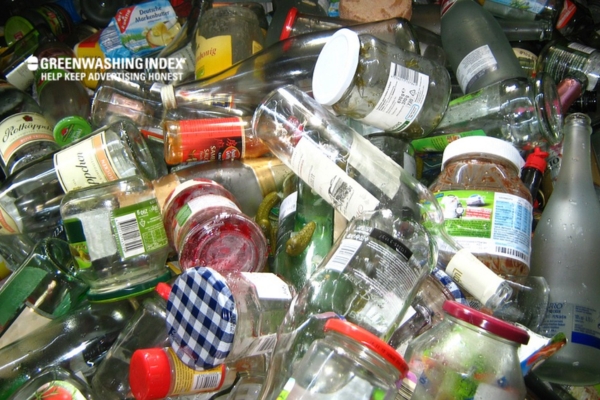
Why Some Glass Can’t Be Recycled?
Not all glass is the same. You might have heard terms like tempered or colored glass. These different types of glass often cause problems in the standard recycling programs.
Tempered Glass: This is the toughened stuff you find in car windows, cookware, and some coffee tables. It’s made to be stronger than regular glass so that it doesn’t break easily. Because of how it’s made – treated with heat or chemicals for strength – tempered glass melts at a higher temperature than normal bottle glass. This means if we mix tempered pieces with bottle pieces in one recycling bin, they won’t melt together properly when recycled.
Colored Glass: Then there’s colored glass – think of those beautiful green wine bottles or brown beer bottles you may have in your fridge right now. The color comes from adding different minerals when the glass is made. The trick here is that some recycling programs might only want clear glass because mixing colors can ruin a whole batch of new, recyclable material.
So next time you’re staring at an empty jar or bottle, wondering why recycling isn’t always easy-peasy, remember those factors! Not all types of glasses will fit into what we call ‘glass recycling’ simply because they need special treatment or may even harm the whole recycling process if not separated properly.
It’s sad but true that sometimes these sorts can end up in landfills instead of being turned back into useful items because dealing with them correctly takes extra effort and money – something, not all local councils or waste management companies are prepared to handle.
Improving the Odds for Unrecyclable Glass
When I think about glass recycling, I used to wonder why some glass can’t be recycled. But things are changing. Communities and companies are getting smart about handling glass that was once thought tough to recycle. Here’s how they’re working to make pretty much all types of glass recyclable.
- First, there’s a big push for better sorting. Imagine all the different kinds of glass – bottles, jars, windows. Now, companies are coming up with new machines and systems to sort them out efficiently because mixing them up used to mess things up at recycling plants.
- Second, research is key. Scientists and engineers are digging deep to better understand different kinds of glass. Their goal? To figure out ways to make every kind usually thrown away into something new again.
- Third, let’s talk about innovation in processing technology. Some really smart people have invented new machines that can clean and process glass in ways old machines couldn’t do before.
Here’s a simple list:
- Cleaning Tech: They’ve made new washers and scrubbers that get rid of stuff like labels and leftover food, so the glass is squeaky clean for recycling.
- Crushing Advances: There are these super-strong crushers that break down tough types of glass so they can be melted and reshaped.
- Heat Treatment: They found if you heat certain unrecyclable glasses just right, suddenly they’re not so stubborn anymore!
And there you have it: communities and companies are changing the ABCs of glass recycling right before our eyes!
Also Read: Recyclability of Milk Cartons: Is It Possible or Not?
Benefits That Shine Clear
When I think about glass recycling, there’s no doubt it’s good for our world. Let me lay down some clear perks of recycling glass over not giving it another chance in the cycle.
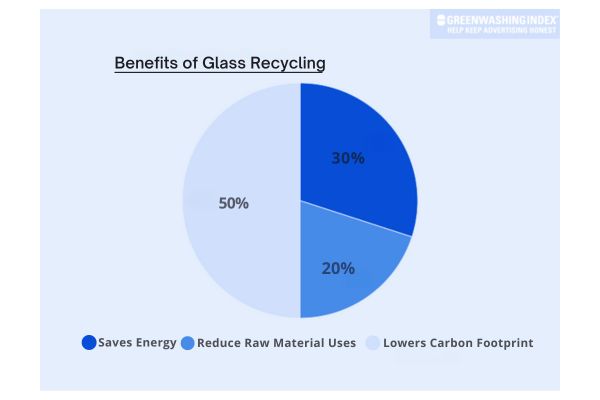
Environmental Impact of Recycling vs. Not Recycling Glass
Suppose we have two paths: one where we recycle glass and the other where we just throw it away. The differences are huge when we look at what each path does to our environment.
- Energy Savings: Here’s a fact that might surprise you – recycling glass can save a big chunk of energy. It takes less heat to melt recycled glass compared to creating new glass from raw materials like sand, soda ash, and limestone. To make it simple, let’s say if we recycle one glass bottle, the energy we save can power an old-style light bulb for as long as four hours.
- Raw Material Use Reduction: This is pretty straightforward – if we keep using new resources every time to make new bottles and jars without recycling them, eventually, they’re going to run out or, at the very least – become scarce. But when we recycle, those same materials get reused again and again.
- Lesser Carbon Footprint: Now, this is about how much bad stuff (like greenhouse gases) gets released into the air—the stuff that makes our planet warmer than it should be. When making products from recycled glass rather than fresh materials, there’s a big drop in these nasty emissions, which means cleaner air for us and the animals.
It becomes quite clear that choosing to recycle gives nature a bit of breathing space — much needed in today’s world! Plus, every little action adds up when many people start doing their part in the ABCs of glass recycling. It’s not magic—it’s just smart!
Advanced Strategies in Recycling Glass
When I look at the world of glass recycling, it’s clear that experts are always looking for ways to do things better. Everyone wants to make glass recycling more efficient – after all, it can save energy and resources. So, let me share with you some of the advanced strategies that are making a big difference in glass recycling.
Innovations Driving Better Results in the ‘Recycling Glass’ Sector
I’m really excited about the new technologies out there. These innovations are like game-changers for how we handle glass recycling. They’re all about sorting out the good stuff and getting rid of anything that might cause problems later on.
- Color-sorting systems: Have you ever noticed different colors of glass bottles? Well, they should be recycled separately for the best results. Now, there are smart machines that use cameras to see the color and then puff air to push each color into its right bin.
- Crushing technology: Crushing glass into tiny bits is important before it can be melted again. There’s this new kind of crusher that makes really uniform pieces without using much water or energy. This means we can recycle more glass at less cost!
- Cleaning advancements: Recycled glass needs to be super clean before re-use. Another cool technology I’ve seen uses special liquids and heat to get rid of leftovers like labels or food residue – leaving behind only clean glass ready for a new life.
- Laser scanning units: Dirt or other little bits mixed in with old glass can mess up the whole process. But now lasers scan through everything and spot those unwanted bits faster than you could say “recycle”!
- Automated sorting lines: Human hands are used to do most of this sorting work, but humans get tired, plus they can’t work as fast as a machine can sort! Nowadays, conveyor belts move old bottles along while machines separate them by size, shape, and type—all on their own!
These new moves in the world of recycling aren’t just minor tweaks; they’re big steps toward making sure no piece of recyclable glass gets missed. And if you think about it – every single recycled bottle counts because one bottle less will end up harming nature.
By using these advanced strategies, we’re really pushing ahead into a future where nothing gets wasted – and everything (including old jars or bottles) gets another chance to shine!
Also Read: Appliance Recycling Essentials: Master Eco-Friendly Disposal
FAQs
Are window & drinking glasses recyclable?
Yes, drinking glasses are often recyclable. Windows, however, can’t always be recycled through regular programs because they contain different materials.
How is recycled glass processed differently from new glass production?
Recycled glass is cleaned and crushed into small pieces called cullets before melting. New glass production starts from raw materials like sand and goes through more energy-intensive processes.
Are there any limitations on the amount of times glass can be recycled?
Nope! Glass can be recycled endlessly without losing purity or quality. That’s one great thing about glass recycling—it’s infinitely renewable.

